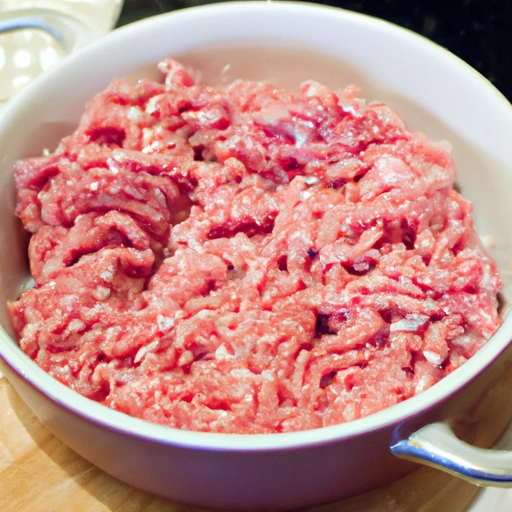Minced Pork
Description

Minced pork, also known as ground pork, is a highly versatile ingredient made from pork meat that has been finely chopped or ground. It is a popular component in numerous dishes across different cuisines, valued for its rich flavor and adaptable texture. Depending on the cut of pork used, the fat content can vary, allowing cooks to choose the best type for their particular recipe. In recipes, minced pork is often measured in grams or ounces, with common portions in European recipes ranging from 250g to 500g, and in American recipes from 1/2 pound to 1 pound.
Common uses
Minced pork is commonly used in a variety of dishes, including meatballs, dumplings, sausages, and as a filling for sandwiches and pastries. It also serves as an important base for sauces, such as Bolognese, and can be found in many traditional dishes like shepherd's pie and stuffed vegetables.
Nutritional value
Calories
A typical serving of minced pork (100g or about 3.5 ounces) contains approximately 297 calories.
Protein
This serving size provides about 25.7g of protein, which is essential for building and repairing tissues.
Fat
The fat content can range from 20g to 30g depending on the cut of pork used, with a mix of saturated and unsaturated fats.
Carbohydrates
Minced pork is low in carbohydrates, with less than 1g per serving.
Vitamins
It contains various B-vitamins, particularly B1, B6, B12, niacin, and riboflavin, which support energy production and nervous system health.
Minerals
Important minerals in minced pork include zinc, which is vital for immune function, and iron, which is crucial for blood health.
Health benefits
Minced pork, as a source of high-quality protein, plays a role in muscle maintenance and growth. The B-vitamins it contains help in metabolizing energy, while the iron content aids in preventing anemia. Regular, moderate consumption within a balanced diet can contribute to overall health and well-being.
Potential risks
However, due to its fat content, particularly saturated fat, excessive intake of minced pork may increase the risk of heart disease. It is also high in cholesterol. As with all meats, there is a concern about the potential for foodborne illness if not cooked properly, and processed minced pork products may contain additives like sodium and preservatives.
Common recipes
Minced pork is featured in recipes like spaghetti with meat sauce, Asian lettuce wraps, Swedish meatballs, and classic American meatloaf.
Cooking methods
It can be cooked using a variety of methods, including frying, baking, grilling, and boiling. Minced pork should always be cooked to an internal temperature of 160°F (71°C) to ensure safety.
Pairing with other ingredients
This ingredient pairs well with bold spices like paprika, cumin, and garlic, as well as fresh herbs such as parsley, cilantro, and sage. It also complements a variety of vegetables including onions, bell peppers, and leafy greens.
Summary
Minced pork is a rich, flavorful ingredient that lends itself to a broad spectrum of dishes from around the world. It provides essential nutrients but should be consumed in moderation due to its fat content. With proper preparation and cooking, minced pork can be a delicious and nutritious addition to the diet.